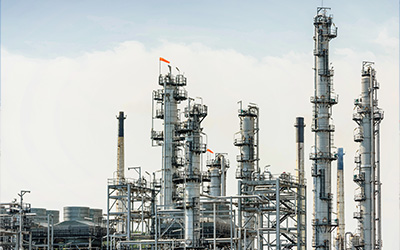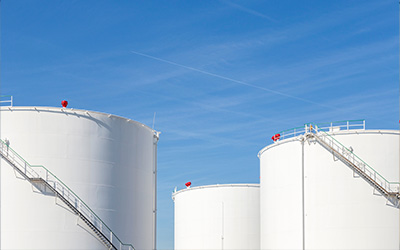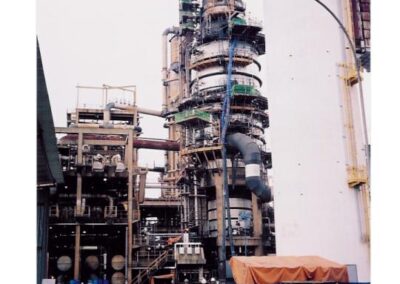Part 16
H2S is a toxic, colorless gas that is invisible, explosive, flammable, heavier than air and a leading cause of fatalities in the oil and gas and petrochemical industries. It is formed when organic material decomposes. Hydrogen sulfide scavenger technology has been created to ensure safe working environments.
At low concentrations, hydrogen sulfide has an offensive odor of rotten eggs. At high concentrations, it deadens your sense of smell. It is corrosive to metals having two active protons making it acidic in nature. It combines with iron to form iron sulfides which are often pyrophoric and can be the cause of fires in processing and storage equipment. Because of all these hazards, hydrogen sulfide scavenger technology has advanced to effectively decontaminate equipment for safe working environments.
The immediate danger of exposure to hydrogen sulfide is inhalation. It will cause nausea, headaches, disorientation, irritate the eyes, nose, throat and lungs, cause dizziness among other negative effects like death.
Exposure Effects
| Concentration, ppm | Health Impact |
| 0.1 | Detectable odor of rotten eggs |
| 10 | Maximum allowable exposure limist over an 8-hour work day |
| 100 | Immediate danger to life |
| 500 | Victim loses sense of reasoning; breathing stops quickly |
| 700 | Unconsciousness occurs quickly |
| 1000 | Immediate unconsciousness occurs followed by death within seconds |
In contact with peroxides, bromates, ammonia and other chemical compounds, it can trigger strong reactions that cause spontaneous combustion, explosions and detonations. When combined with moisture, hydrogen sulfide ionizes to become acidic and corrodes metals such as pipelines, tanks, and vessels through the formation of sulfuric acid. Mixtures in air can become explosion hazards.
Exposure Limits
UEL – 45.5 vol.%
LEL – 4.3 vol.%
Corrosion Damage
Hydrogen sulfide causes sulfide stress cracking, hydrogen embrittlement and pitting corrosion in oil and gas processing equipment. The corrosion of iron in the presence of Hydrogen Sulfide and water is due to the dissociation of the hydrogen protons. Iron is oxidized to the ferrous form at the anode.
At the cathode, hydrogen is produced and either enters the steel or forms hydrogen gas and bubbles off as a potential fire and explosion hazard.
H0 + H0 → H2 (gas) |
Hydrogen enters the steel by adsorption onto the water steel interface and then being absorbed into the steel as hydrogen. If the concentration of anions such as HS– is sufficient, hydrogen gas creation is reduced and promotion of hydrogen (H0) is favored and enters the steel to begin steel embrittlement.
Hydrogen Sulfide Scavenger Technology
Hydrogen sulfide scavenger technology comes in many commercially available types. Most scavengers work on a surface adsorption process or through ionic precipitation. If surface adsorption is the method, there must be enough fluid turbulence to assure that the scavenger and the sulfide actually collide in order for the necessary reactions to occur.
Copper compounds such as Copper Carbonate have been used for sulfide control. It is fast and efficient. However, its use is often impractical as copper will plate-out on any ferrous metals and create a corrosion cell and thus promoting a large amount of corrosion damage.
Zinc compounds such as Zinc Oxide and carbonate are capable of dissolving at both ends of the pH spectrum and produce a fast and complete precipitation of the sulfides. However, zinc-based scavengers can cause excessive deposits of zinc sulfide products in equipment and are also detrimental in downstream water processing operations.
Chemical oxidizers can remove Hydrogen Sulfide from petroleum processing operations, but can produce undesirable side effects such as oxygen corrosion and the formation of unwanted solids. Examples of chemical oxidizers include hydrogen peroxide, sodium percarbonate, permanganate salts, thiosulfate, chlorine dioxide and hypochlorites.
Aldehydes have been used in surface cleaning operations. While useful in removing the sulfide hazards, aldehyde reactions are slow and inefficient. And, there are many questions about the health, safety, and environmental implications of exposure to acrolein, formaldehyde and other aldehydes. For example, formaldehyde is a potent carcinogen.
Triazine-based scavengers are well established in the market place and are effective in Hydrogen Sulfide control. They are inexpensive and easy to produce. But, at temperatures below 40°C, triazine scavenging rates become increasingly low. Triazines do not function well in acidic pH applications. And, at near neutral pH the molar reaction efficiency becomes no better than one-to-one.
The use of triazine-based scavengers has come under increased pressure due to the formation of undesirable, insoluble solids (dithiazine). These solids create deposits in transfer lines, contactors and other equipment that cause product flow problems and are an expensive maintenance cost to remove.
As you can see, there are many types of chemical scavengers in use depending on the intended area of application. Ideally, the scavenger must be able to perform quickly, be reactively efficient, react completely without producing problematic side effects, be personnel safe for application and usage and economically attractive. While there are many types of scavengers available, each of them has one or more limitations; ranging from expensive pricing to health, safety and environmental problems.
Selection of the proper hydrogen sulfide scavenger technology is dependent on the application, the conditions of the application, the downstream implications and the possible unwanted byproducts or side reactions.



